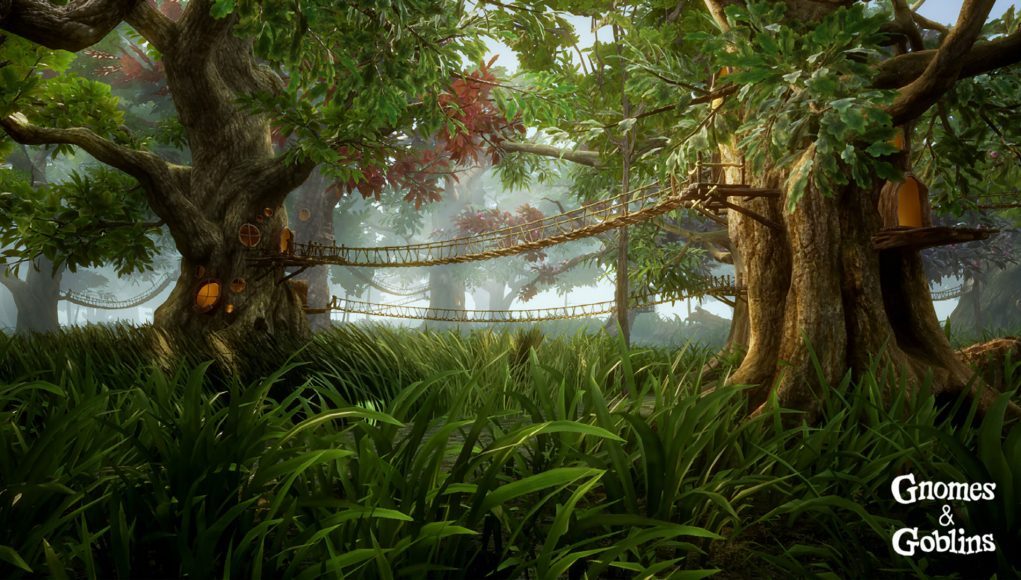Four years after the release of a preview of the game, Gnomes & Goblins is finally here. Pitched as a “fantasy adventure VR simulation” with direction by film director Jon Favreau, Gnomes & Goblins delivers a beautiful appetizer with a rotten main course.
Gnomes & Goblins Details:
Available On: Oculus PC, SteamVR, Viveport
Release Date: September 23rd, 2020
Developer: Wevr
Reviewed On: Valve Index
Gameplay
If you only played the first 45 minutes of Gnomes & Goblins, you’d probably walk away happy for the experience.
The game’s prologue drops players info a beautifully rendered woodland realm inhabited by little green goblins. To them, you’re a giant. But soon enough you’ll befriend one which will lead you around their little realm and introduce you to the others. And in short order you’ll be taken along a largely well directed, and at times, beautiful little journey. I won’t spoil anything, but it’s an effective little bit of world building that makes it feel like the goblins really live in the forest and that there’s some history to their world.
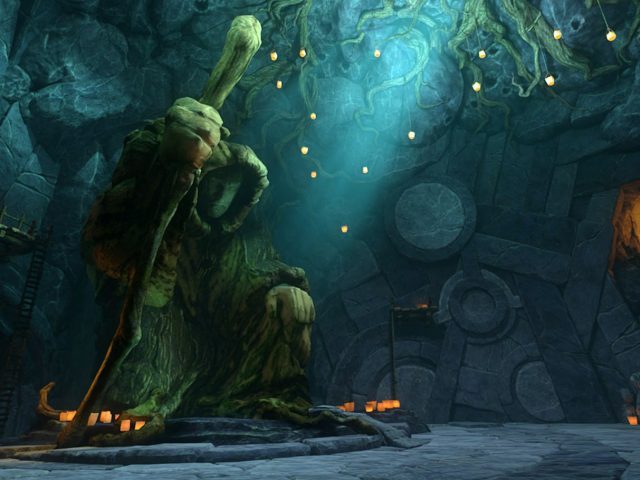
Having a little NPC to guide you around and point out things to do or look at is a smart way to direct the player’s attention. Throughout the prologue this works well; it’s done in such a way that the game needs no voice instruction or text instruction to help you figure out what you need to do.
It’s everything after the prologue—when the game turns you loose to explore the woodland realm without any guidance—where it all breaks down.
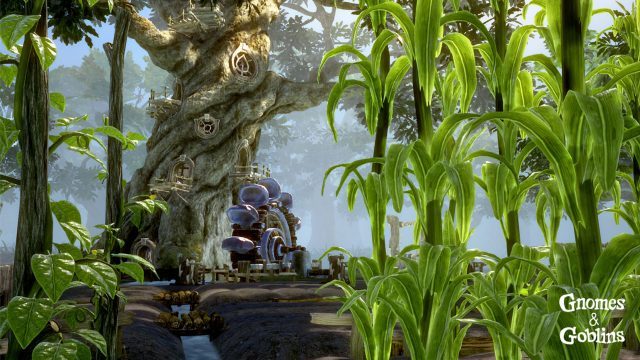
After the 45 minutes of prologue, the game becomes part walking sim, part farming sim, and part scavenger hunt. And you’re left entirely on your own to figure out the game’s inscrutable mechanics. The result is several layers of frustration.
Gnomes & Goblins fails to clearly lay out a core gameplay loop or even an overarching goal for the player. There’s clearly something about farming and crafting brews—but it’s unclear as to why you’d want to do this, let alone how.
Gnomes & Goblins asks you to go scavenge hunting for things without first explaining what you are looking for or why. And when you do find the thing you’re looking for, there’s nothing interesting to do with it; you just touch it and it disappears in a flash. This is made worse by the fact that it’s never clear at a glance which objects in the world are interactive. There may be a table full of 50 books, but only one of the books can be interacted with.
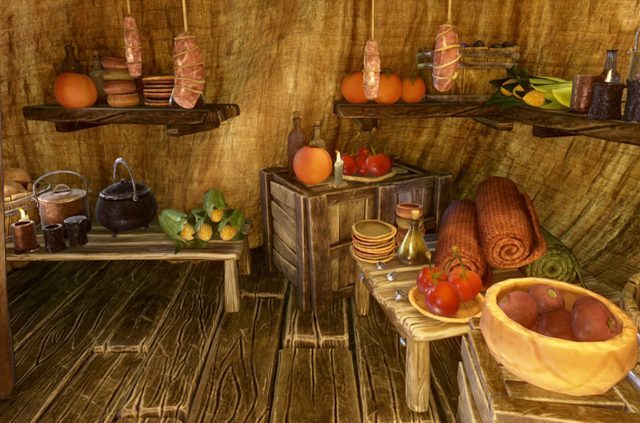
It should have been a hint to the game’s developers that the necessary inclusion of an always-accessible ‘hint fairy’—which highlights through walls anything the player can interact with—might be a sign of a design issue.
I could go on any tell you about the game’s various issues with player direction—like the entirely unexplained inventory system, or the inexplicable teleporting stone, or the seemingly random disappearance and reappearance of a key player ability—but it’s easier just to tell you that it took a little over three hours for Gnomes & Goblins to frustrate me to the point of deciding I was done with the game.
Make no mistake. I’ve played and enjoyed many games where the player is given little information about how everything works, and ‘mechanical discovery’ actually brings a positive sense of ‘exploration’. If that’s what Gnomes & Goblins was going for, it unfortunately missed the forest for the trees.
The lack of clear direction was so detrimental to the experience that I actually thought maybe there was a intended to be a voice-over narration explaining what I should be doing but it had simply failed to play correctly.
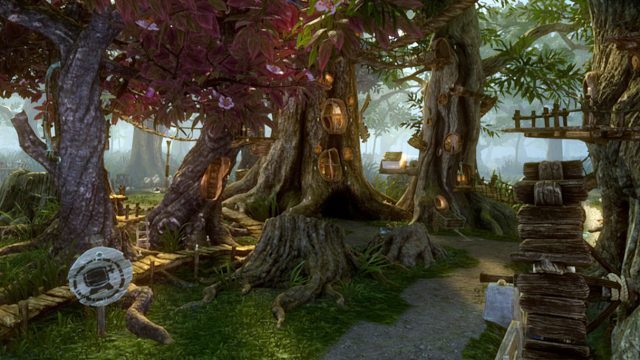
It’s a shame that the game’s inscrutable gameplay kept me from wanting to come back, because the woodland realm of Gnomes & Goblins otherwise is a beautiful and mysterious one that would be a lovely backdrop for rich gameplay.
Immersion
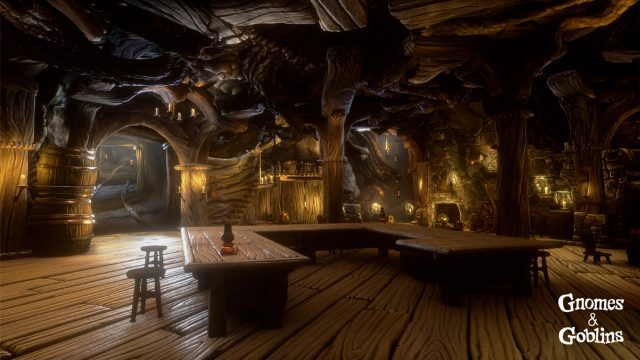
It’s hard to be immersed with poor gameplay direction, but putting that aside, Gnomes & Goblins does offer up a very pretty world that feels like you’ve been dropped into a richly illustrated storybook—assuming you have the PC to run it (more on performance in the Comfort section below).
Especially in the prologue, there’s strong world building that strikes a nice balance between subtlety and curiosity. There’s a feeling that the world is larger than just the slice that you’re standing in.
There’s some definite immersion breakers though. For one, the game always shows a silhouette of your VR controllers instead of hands or something more thematically appropriate like a wand. There’s also many areas in the game where you’ll be walking down a perfectly clear and open path only to be met by an invisible wall. You’ll also find yourself blocked by as little as blades of grass, such that you’ll need to find your way around to a dedicated path to reach a clearing that would otherwise take two steps through the grass.
One of the biggest immersion breakers is object interactions, or the lack thereof. Gnomes & Goblins is filled with hundreds and hundreds of detailed objects. Cups, plates, plants, berries, bags, flowers, seeds, books, tools, etc, etc, etc. But 95% of the objects in the game cannot be interacted with, and unless you’re constantly sharking the ‘hint fairy’, figuring out what objects are actually interactive (and therefore possibly useful) is purely trial and error.
Comfort
Gnomes & Goblins has some strange controls out of the gate. Luckily you can dive into the Options and quickly configure something sensible, as long as you can figure out the menu which uses a few non-standard terms.
As far as I was able to find, the game supports both smooth movement (controller and head based) and a sort of shift movement (called ‘Bump’), but the latter moved in such tiny increments that it seemed unusable. Seated and standing play are both supported.
Assuming you are ok with smooth movement, Gnomes & Goblins is mostly comfortable. There are times where sensitive players might find issue, like when moving at full speed through a tunnel, but you can always choose to walk slower to keep this more comfortable.
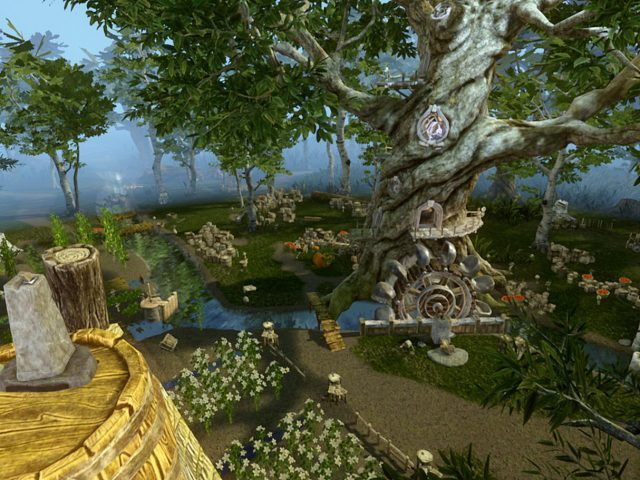
Climbing ladders is frustratingly slow, and climbing down them generally requires walking off of the virtual edge and then leaning down to grab the ladder and then pulling yourself down. It’s… awkward.
For a game with a friendly, fantasy atmosphere, Gnomes & Goblins is surprisingly demanding in terms of performance and has a Minimum Specification which is higher than even the Recommended Specification of most VR games.
| Recommended Spec | Minimum Spec | |
| OS | Windows 10 | |
| Processor | i7-9700K or equivalent | i7-6700K or equivalent |
| Memory | 32GB RAM | 16GB RAM |
| Graphics | GTX 2080 or equivalent | GTX 1080 or equivalent |
| DirectX | Version 11 | |
| Storage | 35GB | |
Even on my machine, which surpasses the game’s Minimum Specs but doesn’t quite make the Recommended Spec, I had to play on Low graphics settings to prevent constant, uncomfortable stuttering. That’s a shame because the game world looks so good that I often found myself temporarily switching to the High setting—just to see how the world looked—before switching back to Low so that I could play comfortably.

